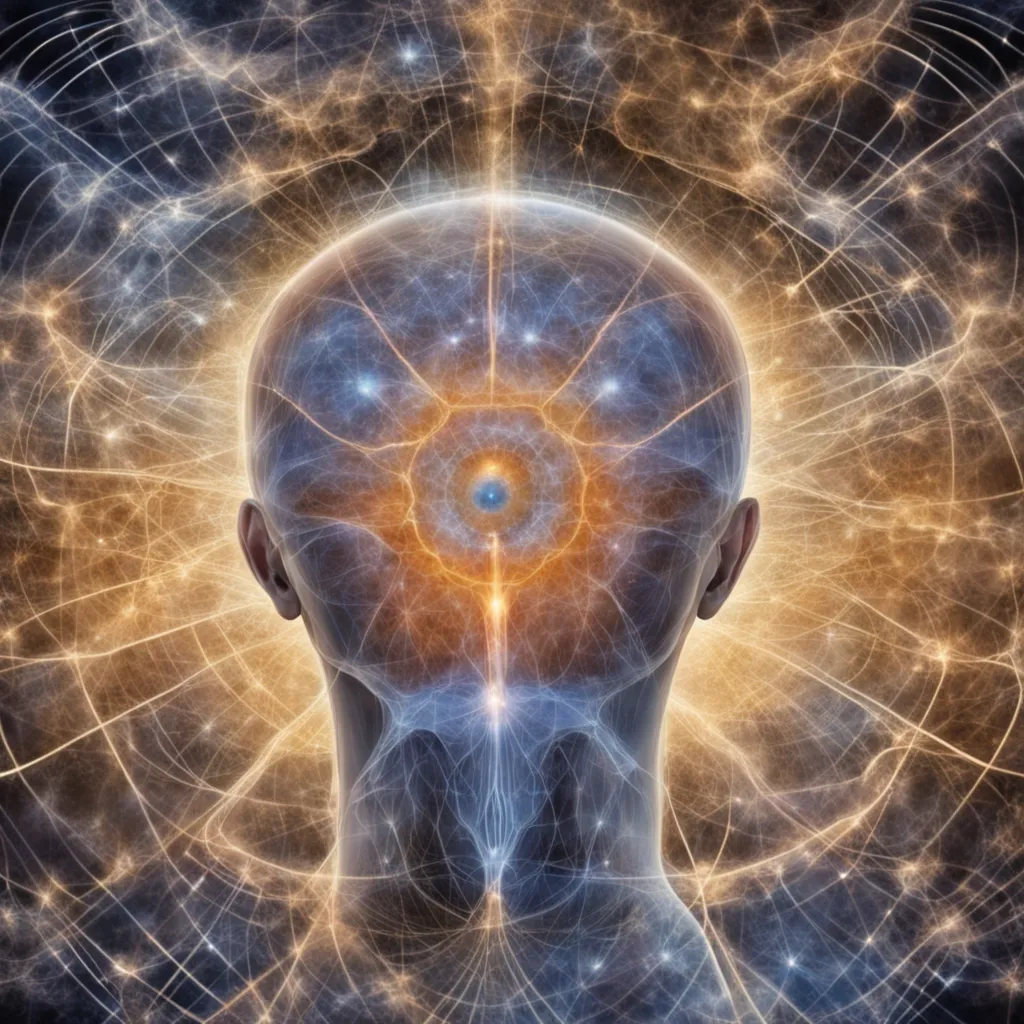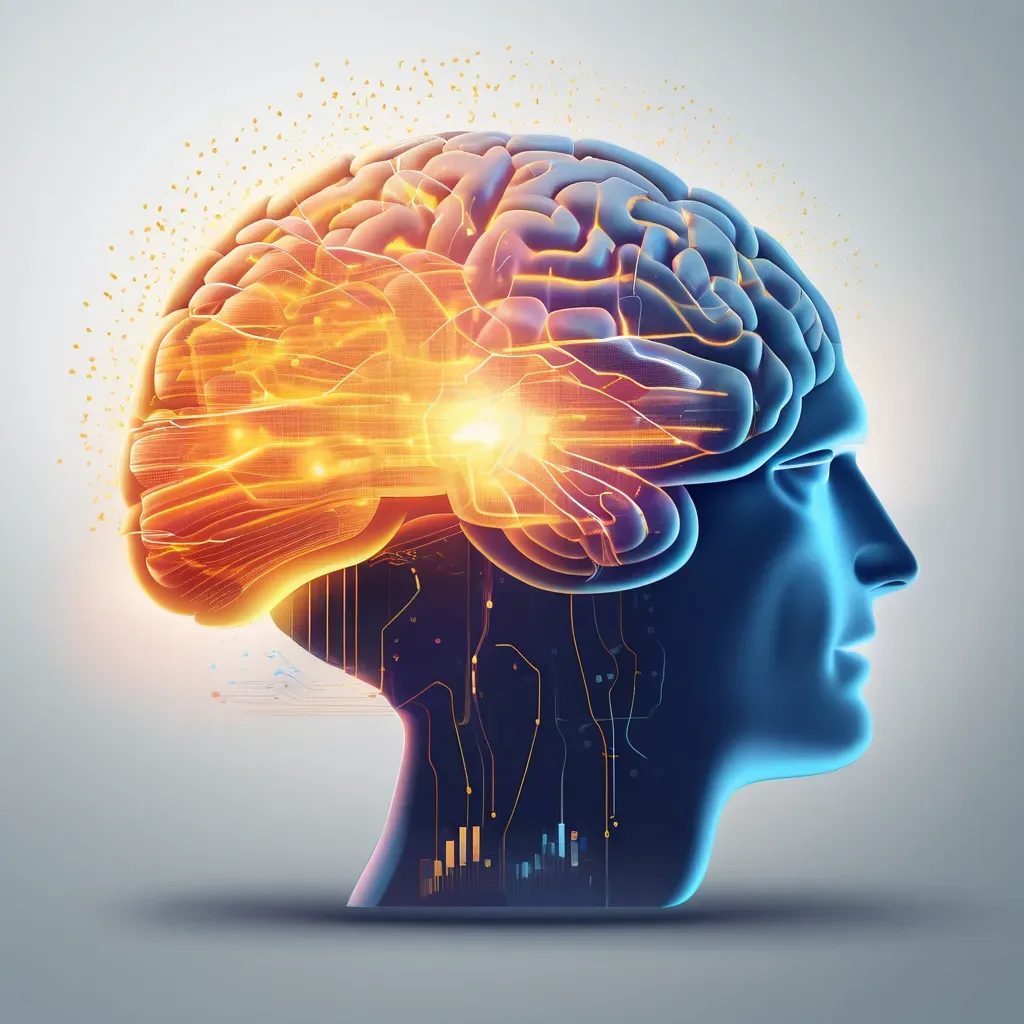Consciousness might not be fundamental — it could be a side effect of compressing infinite experiential data into finite representational space. The flickering light behind your eyes isn’t a soul — it’s a glitchy residue, the heat leak of a mind trying to render too much.
Consciousness as a Compression Artifact
Is consciousness the core of our existence — the seat of the soul, the ineffable essence of being? Or is it something far less mystical, perhaps even mechanical? One compelling hypothesis is that consciousness is not fundamental but rather a side effect of the brain’s attempt to compress an infinite stream of sensory and experiential data into a finite representational model. This idea reframes the concept of self-awareness, suggesting that the “flickering light behind your eyes” is not an eternal or intrinsic soul but a glitchy residue of a mind striving to process too much with too little.

The Infinite Data Problem
Imagine standing on a beach, taking in the crashing waves, the faint smell of salt, the warmth of the sun on your skin, and the endless horizon. In that moment, your brain is processing an extraordinary amount of sensory input: light, sound, smell, touch, and even your own internal thoughts. Now multiply this by every single second of waking life. The amount of raw data is incomprehensibly vast.
Our brains, however, are not infinite machines. They operate within the constraints of finite energy, neural structures, and processing capacity. To function efficiently, the brain must filter and compress this overwhelming flood of information into something manageable. It discards what it deems irrelevant, highlights what is important, and stitches together a cohesive experience of “reality.” The result is not the raw data itself but rather a compressed version — a simplified model that allows us to navigate the world without being overwhelmed.
This is where the analogy to video compression becomes useful. When you compress a high-resolution video file, the algorithm retains only the most essential elements, discarding redundant or imperceptible details. The final product is a smaller, more manageable file that still conveys the essence of the original. Similarly, consciousness may be the “compressed file” of our sensory and cognitive inputs.

Consciousness as a Byproduct
If consciousness is the result of this compression process, then it is not fundamental in the way we often assume. It is not the raw data of reality but a processed, abstracted, and simplified representation. Consciousness, then, is less like a direct view of the world and more like a curated highlight reel — a series of snapshots and narratives, stitched together by the brain to create the illusion of continuous, cohesive experience.
But compression is not a perfect process. In reducing data, artifacts often emerge. In video compression, these artifacts can manifest as pixelation, blurring, or other distortions. In the case of consciousness, the “artifacts” might be the sense of self, the feeling of agency, or the perception of time flowing in a linear fashion. These might not be intrinsic properties of reality but rather emergent phenomena created by the brain’s compression process — glitches that feel real to us because they are all we know.

The Heat Leak of the Mind
One way to think about these artifacts is as a kind of “heat leak.” When a machine operates, it inevitably generates waste heat as a byproduct of its function. Similarly, consciousness might be the byproduct of the brain’s computational processes — the energetic residue of a finite system grappling with infinite complexity. The “flickering light behind your eyes” may not be a soul or a universal essence but rather the unavoidable result of the brain’s attempt to render a coherent experience of the world.
This idea aligns with the notion of predictive processing in neuroscience. According to this framework, the brain constantly generates predictions about the world based on past experiences and adjusts these predictions in response to new sensory input. Consciousness, in this view, is not a direct experience of the world but the brain’s best guess about what is happening. The “heat leak” could be the unavoidable mismatch between prediction and reality — the noise in the system that we interpret as self-awareness.

Implications for Philosophy and Neuroscience
The idea of consciousness as a compression artifact has profound implications for both philosophy and neuroscience. It challenges traditional notions of selfhood, agency, and the nature of reality. If consciousness is not fundamental but emergent, then the “self” we identify with might also be an illusion — a convenient fiction created by the brain to make sense of its own processes.
Philosophically, this perspective aligns with certain strands of Buddhist thought, which posit that the self is not a fixed entity but a transient, constructed phenomenon. It also resonates with Daniel Dennett’s “multiple drafts” model of consciousness, which suggests that what we experience as a unified self is actually the result of many competing processes within the brain.
From a neuroscientific perspective, this hypothesis opens up new avenues for understanding the brain. If consciousness is an artifact of compression, then studying how the brain filters and processes information could provide insights into the mechanisms underlying self-awareness. It also raises questions about whether artificial systems, such as advanced AI, might develop a form of consciousness if they engage in similar compression processes.

Critiques and Counterarguments
Of course, this hypothesis is not without its critics. Some argue that it reduces consciousness to a mere epiphenomenon, ignoring the rich, subjective qualities of experience known as “qualia.” Others point out that the analogy to compression might oversimplify the brain’s processes, which are far more complex and dynamic than any current algorithm.
Moreover, if consciousness is just a byproduct of compression, it raises the question of why it feels so vivid and real. Why does the brain bother creating a self-aware observer at all, rather than simply processing information unconsciously, as many other systems in nature do? These are open questions that require further exploration.

Conclusion
The idea of consciousness as a compression artifact is both humbling and awe-inspiring. It suggests that our most deeply held sense of self is not the ultimate reality but a miraculous byproduct of a finite mind grappling with infinite complexity. This perspective doesn’t diminish the beauty or significance of conscious experience; rather, it invites us to see it as a testament to the ingenuity of evolution and the adaptability of the human brain.
Ultimately, whether or not this hypothesis proves correct, it challenges us to rethink our assumptions about what it means to be conscious and to embrace the mystery of the mind with curiosity and wonder. After all, the flickering light behind your eyes may not be a soul — but it is still a marvel of nature.

References and Further Reading
-
Tononi, Giulio (2004). “An Information Integration Theory of Consciousness.” BMC Neuroscience
-
Bayne, Tim, et al. (2016). The Oxford Companion to Consciousness
-
Clark, Andy (2015). “Surfing Uncertainty: Prediction, Action, and the Embodied Mind.”
